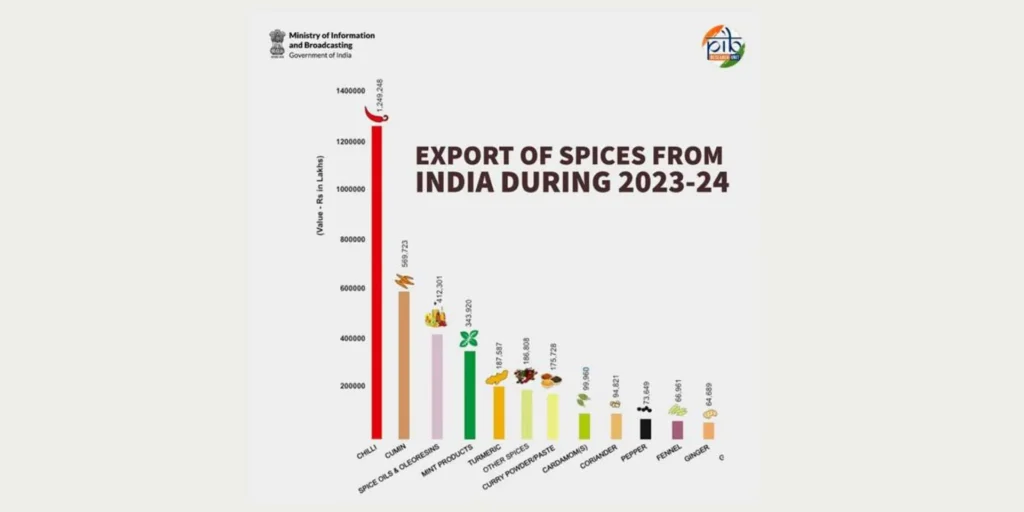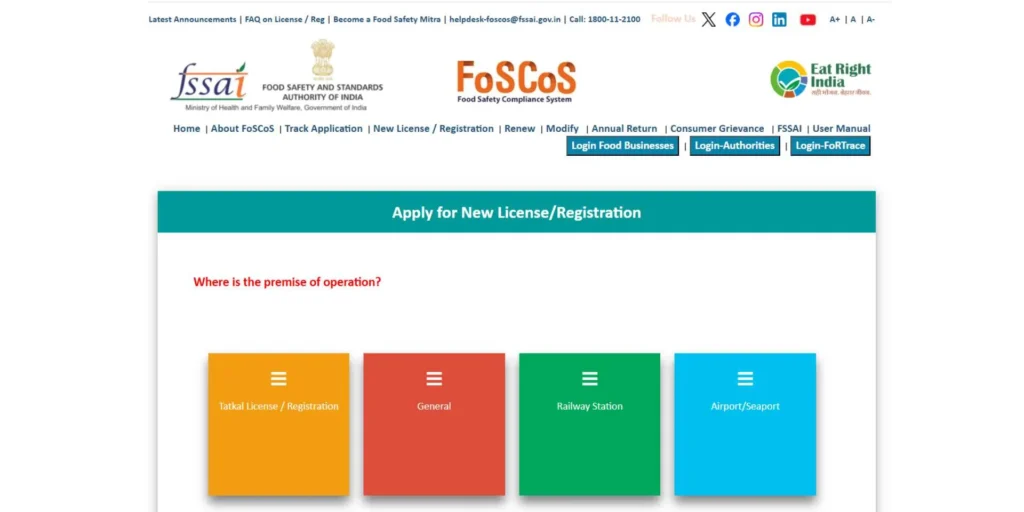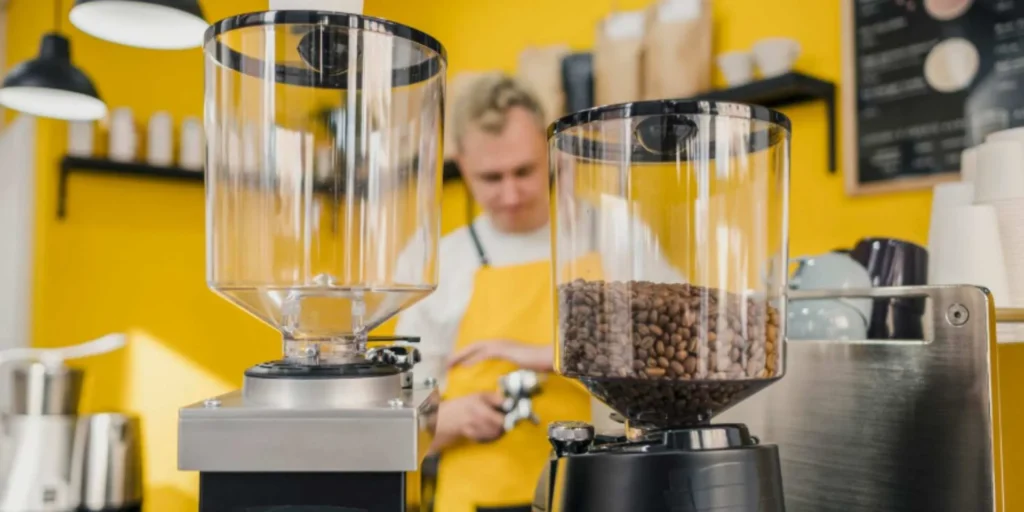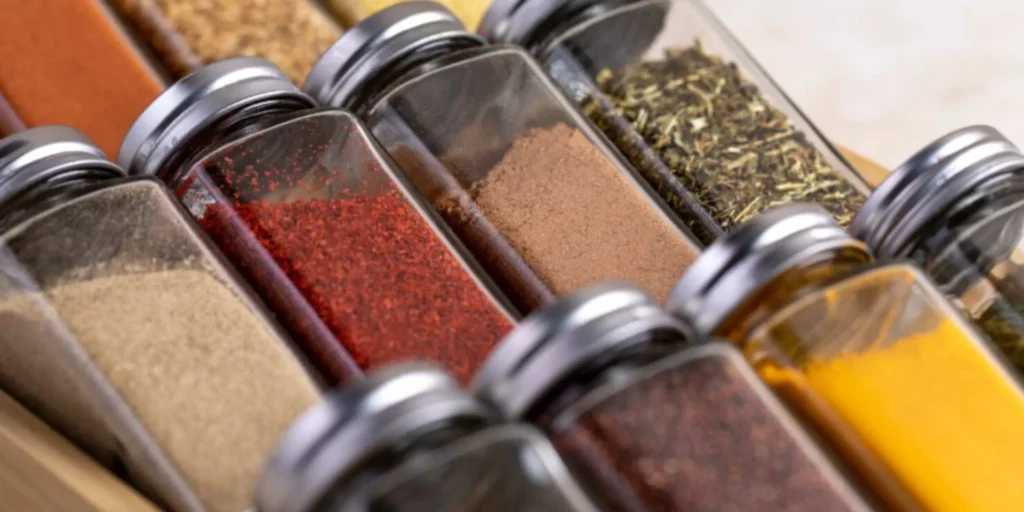India, being the land of spices, has enormous opportunities that require business persons who wish to venture into the masala business. As local demands grow and export markets continue to open up, the question of how to open a masala business has gained more significance among potential business owners. The Indian spice business is an amalgamation of both conventional wisdom and new production methods, resulting in a billion-dollar industry.
Whether you choose to start with domestic spice or a blend with high-grade ingredients, it is crucial to know how to start masala business to be a success. It is a complete tutorial which takes you through every step of setting up a masala business- starting with preliminary research on the market to setting up processes so that you are well equipped to create a thriving business in this aromatic Masala Business in India.
Masala Business Overview
Market & Growth Potential
The Indian spices market is one of the most vibrant industries in the world with an estimated domestic market of about 40,000 crores and about 4 billion dollar worth of yearly exports. The latest industry reports point out that the market will expand at a CAGR of 10-12% till 2028 due to growing health consciousness wearing convenient lifestyles and growing need of authentic flavors worldwide. India also supplies more than 75 varieties of spices and this covers about 70% of the world’s spice output.
There has been an incredible growth in the well-structured spice segment with branded masala products enjoying 35-40% market share in urban centers. The key growth drivers involve growth in middle-class living, development of the food processing industry, increasing restaurant chains and rising international demand for Indian spices. The spice processing is a specialty of states of Rajasthan, Gujarat, Maharashtra, and Karnataka, and the primary market is across 180 countries, the major importers of the spice are the USA, China, Vietnam, UAE, and the UK.
Types of Masala Businesses
- Retail Masala Packaged Business: Production and retail of consumer-packed branded spice powders such as turmeric, chili spices, and coriander in 50g to 1kg sizes via the retail methods.
- Bulk Spice Processing: Grinding and processing in large volumes of whole spices to be sold at wholesale prices to restaurants, hotels, catering services and food manufacturing companies that need in large quantities.
- Blended Masala Production: The production of special spice mixtures such as garam masala, chaat masala, pav bhaji masala, biryani masala, and regional masalas to fit into a particular culinary preparation.
- Organic/Premium Masala Business: specialized in certified organic, free of pesticide, single-source spices and cater to health-conscious consumers who are not price-sensitive to buy low quality spices at high prices, and hence, demand authentic products.
- Export-Oriented Masala Unit: This Mahandas is the production plant with the features of the international quality standards (FSSAI, ISO, HACCP) aimed at the export to the foreign markets with good paperwork and certification.
- Pan Masala/ Mouth Freshener Business: Production of flavored pan masala, gutka substitutes (tobacco free), and mouth freshener, a separate segment with different rules, machinery, and distribution channel that needs them to be required separately.
How to Start Masala Business — Step by Step
Step 1: Market Research & Niche Selection

Carry out thorough market research to determine your target market, your competitors, and niche markets that do well in the masala industry. Research local market consumption, competitive pricing policy of current products, and market gaps.
Choose working on the everyday spices, regional specialty, organic products or export markets. Assess competitor strength, do a survey of what customers want and unique selling propositions that would be able to differentiate your brand among other established players in this competitive industry.
Step 2: Business Registration & Licensing

Incorporate your business to be a Proprietorship, Partnership, LLP or a Private Limited Company depending on the magnitude and investment power.
Acquire direct approvals such as FSSAI license which is a must in food businesses, GST registration, Trade license by municipal standards, Udyam Registration to reap MSME benefits. Secure ISI certification of quality assurance, pollution clearance certificate as well as fire safety NOC.
In the case of export business, acquire Import Export Code (IEC) and abide by the regulations of Spices Board of India to keep quality standards in place.
Step 3: Location & Setup
Select a strategic site that is well connected to raw materials sources and distribution channels and ideally, must be within an industrial belt where water and electricity are available. Your plant must be divided into locations where raw material is stored, processing area, place to pack and place finished goods and the administrative office.
So as to fit the small-scale operation, need a minimum 1,000-1,500 sq ft of space, which can be increased according to the output. The premises must be in line with the local zoning regulations, be ventilated well, pest controlled and conform to FSSAI hygienic conditions.
Step 4: Machinery & Equipment

Invest in basic machines such as industrial spice grinders / pulverizers (50-200 kg/hr capacity), cleaning machines, destructing and destoning machines, roasting machines to add taste, spice mercury machines and automatic / semi automatic packing machines. They also have additional equipment such as metallic detectors, weighing scales, moisture meters and quality testing equipment.
The small scale operations need between ₹3-8 lakhs to buy basic machinery or in the case of medium sized that needs between ₹15-30 lakhs. Select stainless steel devices because they are durable, hygienic and also easy to maintain to maintain consistent product quality.
Step 5: Raw Materials & Packaging

Get raw spices of good quality and assured suppliers, at agricultural markets (mandis) or directly at farmers, in the spice-growding regions. Build networks with different suppliers to be able to supply regularly and to be able to negotiate better prices. To keep the spice fresh and avoid contamination of the spice, invest in good storage facilities where the temperature and humidity is controlled.
To obtain packaging, the most suitable mode of packaging materials should be food grade such as laminated pouches, PET jars, standup pouches or plain paper packages depending on the target market. Stamp beautiful labels that comply with FSSAI labeling provisions, that exhibit ingredients, nutritional information and stock information.
Step 6: Branding & Marketing

Create an attractive image and name that is easily remembered and admired that leaves a lasting impression with a catchy brand image and name plus novel packaging that will attract your target group. Develop a multi-channel marketing approach, the components of which would include both offline-based (local advertising, distribution to retail stores, attendance of trade events) and online-based (social media presence, web-based e-commerce applications Amazon or Flipkart, company-owned webpage, work with influencers) marketing activities.
Due to the competitive nature of this market, free samples, nice entry pricing and loyalty programs will be offered in order to develop a customer base and make them buy it over and over again.
Investment & Project Cost (India)
The overall cost of making masala business depends heavily on the size, region and the output capacity. A small size facility with a production capacity of 100-200 kg in a day anticipates a start-up capital of ₹5- 10 lakhs.
It takes ₹15-30 lakhs to venture in medium scale operations, and ₹50 lakhs to multiple crores to venture in large manufacturing units. Investment includes equipment, licensing, materials, Russellizing, working capital and marketing expenses.
| Cost Component | Small Scale | Medium Scale |
| Machinery & Equipment | ₹3-5 lakhs | ₹15-20 lakhs |
| Licenses & Registration | ₹30,000-50,000 | ₹50,000-1 lakh |
| Infrastructure Setup | ₹1-2 lakhs | ₹5-8 lakhs |
| Raw Materials (Initial) | ₹50,000-1 lakh | ₹2-3 lakhs |
| Packaging Materials | ₹30,000-50,000 | ₹1-2 lakhs |
| Marketing & Branding | ₹50,000-1 lakh | ₹2-3 lakhs |
| Working Capital | ₹1-2 lakhs | ₹3-5 lakhs |
| Total Investment | ₹5-10 lakhs | ₹25-40 lakhs |
Masala Business Profit Margin
The masala business enjoys appealing profitability, standing between 25% and 60%, according to different variables such as product type, brand positioning, the scale of operation, and distribution channel. Common spices of the day such as turmeric and chili powder, are expected to bring about 20-30% margins, with blended masalas of higher quality (blended with additional colors and aromas) and organic spices taking 40-60% margins as the quality is more perceived. Manufacturers with direct sales to the retailers will benefit better than their counterparts who operate through several distribution channels.
An export related enterprise usually takes into consideration 35-50% margin when international pricing is adopted. Efficiency in procurement of raw materials, optimization of production processes to reduce wastage, maintenance of inventory and proper pricing of the item make it the key to profitability. Trademarked products have higher margins when compared to unbranded commodities. Well controlled quality and uninterrupted supply would see a ₹10-30 lakhs annual returns on operations on a medium scale with established brands. The overall profitability largely depends on the volume sales, distribution network strength is important to remain successful.
Pan Masala Business — Special Considerations
The pan masala sector is a separate department and it needs specific skills other than spice production. This is the mass incensed type like flavored pan masala, mouth fresheners and tobacco-free tobacco, which have strict rules and regulations governing it under the Food safety guidelines. The pan masala manufacturers are required to be licensed separately to produce pan masala under the FSSAI, meet the packaging regulation and labelling policy that enforces health warnings, and meet state-specific laws regarding sale and distribution. Machinery needs vary widely, such as specialized coating machine, flavor mixing, expensive and high speed automated packaging at ₹10-40 lakhs.
Betel nuts, menthol, cardamom, flavouring agents, and food grade colour are few among raw materials that the company needs to carefully source and perform quality control. The network channel is very keen on the pan shops, kiosk stores and counters with fast inventory turnover. Advertising has limitations to marketing hence brand presence and distributor orants are vital.
The profit margin lies between 30-50% with market competition established despite the situation. Learning the tastes of the region, retaining the same taste profile, and adhering to the regulations are the key to the success in this particular business segment.
Marketing & Distribution Channels
Effective mixed channel distribution strategies between traditional and new channels is a key success ingredient to successful Masala businesses. Direct retail distribution using distributors and wholesalers to sell directly to kirana stores, supermarkets of hypermarkets in various regions, are the primary avenues.
Laying connection in institutional purchase of goods including hotel, restaurants, catering services, and manufacturing of food products guarantees quantity purchase coupled with consistent income. Ecommerce such as Amazon, Flipkart, BigBasket and company-owned websites have gained momentum and caught the attention of urban consumers who find it convenient and offer multiple options.
Current marketing plans include social media marketing on Facebook, Instagram, and YouTube with recipes and product advantages, collaboration with food bloggers and chefs, search engine optimization to be seen online and attending requirements in food fairs and trade shows to do b2b marketing. The old agendas are not obsolete, such as advertisements through local newspapers, product sampling in shops, cool point-sale hacks, and staff incentive programs.
The export channels involve contacting global importers, attending global trade fairs, and acquiring international quality certification. Sustainable competitive advantage is developed with consistency of quality, lower cost and quality customer service.
Also Read: Government Franchises in India
Common Mistakes to Avoid
- Trading Off Quality in Profits: Processing with lower quality raw material, adulterants, or processes which are inconsistent helps reduce costs, but cheap brand image and loss of customers means regulations by food safety control boards will result in punishment.
- Violating Legal Compliance: Working without the FSSAI licenses, labeling, and certifications, or breaking the rules of food hygiene provides an open door to legal woes, penalties, business shutdown, and a blow to reputation, which would be very hard to fix in the market.
- Unwise Packaging Materials: Selecting low-quality packaging materials that can enable entry of moisture, insufficient sealing resulting in food losing its freshness, or use of unappealing designs that cannot grab consumer attention because they are plain, diminishes the shelf life and competitiveness in the market.
- Poor Market Research: When products are launched without being aware of the desires of the target customers in regards to price, taste, preferences in regions, or distribution issues; the result will be inventory build-up, cash flow issues and bankruptcy.
- Insufficient capitalization of operations: Begins with low working capital to fund raw materials availability, cannot continue supply at a steady level, funds marketing stream or experiencing cash crunches in scaling phase will cripple growth potential.
- Ignoring Branding and Marketing: Thinking that quality is a self-selling product whereas not investing in building the brand, connecting to customers, having an online presence and building the distribution networks does not significantly shrink the market penetration and potential revenue.
Conclusion
Mastering how to start masala business in India, gives a chance to an attractive business in a rapidly expanding spice market in the world. To become a successful enterprise, one should have a thorough plan, adhere to the regulations, ultimate attention to quality, and implement the concept of strategic marketing. By creating a mini grinding factory or running an export-oriented brand, it is always knowing how to begin the business of masala by knowing how to properly research and execute it that indeed makes the difference between those who succeed in business and those who fail miserably.
Its growth trend, the consumer base, and the demand in the Indian spice business forms an environment where new competitors who can invest in quality and innovation can participate. Even though there is competition, the variation due to genuine flavors, stable quality, appealing packaging, and market-oriented strategies make it successful in the market. It is not all about machinery and licenses to start masala business, it is about passion about spices, commitment to quality, knowledge of market dynamics and developing customer relationships which may last. One with determination, strategic planning and compliance to quality requirements, how to start masala business can rise to exalted heights in this aromatic and enriching trade.
FAQs
1. How much does it take to actually start up a business of masala in India?
Some of the ₹10 lakhs and ₹5 lakhs required materials, equipment, packaging, licenses, and working capital can get you started with a modest production capacity of masalas using basic machinery.
2. Which are the licenses required to start a masala business?
FSSAI registration / license (obligatory), GST registration, Trade License issued by the local authorities and Udyam Registration are essential. There is also the Import Export Code (IEC) which export businesses have to possess.
3. Both What is the profit margin of the masala business?
Profit margins usually lie between 25 and 60% based on the type of product, brand positioning and channel of distribution. Blended masalas and the premium have a better margin than the commodity spices.
4. Is it possible to in-home startup a masala business?
Very small-scale operations can be registered as a home based masala business though you are required to be registered under FSSAI, keeping standards of hygiene and legal local zoning on the area as well as food safety regulations.
5. What is the time period in which it is possible to start an effective business with masala?
Being planned and carried out will require between 6-12 months to insure operations and create an initial base of customers. It normally takes 12-24 months of steady profitability with the growth of the brand.
 Get 50% off on Vault theme. Limited time offer!
Get 50% off on Vault theme. Limited time offer!